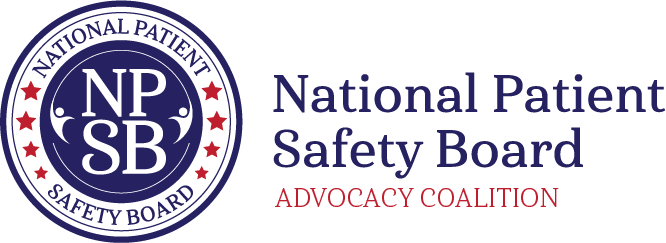Bipartisan Legislation Makes Patient Safety A National Priority
National Patient Safety Board Will Address Preventable Medical Harm, the Third Leading Cause of Death in the U.S.
Washington, DC, March 11, 2024—U.S. Representatives Nanette Barragán (D-CA) and Michael Burgess (R-TX) have announced the reintroduction of the National Patient Safety Board Act, legislation to establish a public-private research and development team within the Department of Health and Human Services that is solely dedicated to preventing and reducing healthcare-related harms. This landmark bipartisan legislation, announced during Patient Safety Awareness Week, is a critical step to improve safety for patients and healthcare providers by adopting patient safety solutions.
Prior to the COVID-19 pandemic, medical error was the third leading cause of death in the United States, with estimates of more than 250,000 patients dying annually from preventable medical harm and costs of more than $17 billion to the U.S. healthcare system. Two recent studies indicate a quarter of patients experience harm while receiving health care. Studies also indicate that patient safety worsened during the pandemic, as have the strains on the healthcare workforce.
The National Patient Safety Board Act would create a National Patient Safety Board (NPSB), a data-driven, nonpunitive, collaborative, independent research and development team housed within the Department of Health and Human Services to address safety in health care. Taking lessons from aviation, which has dramatically increased safety within the industry, the NPSB would identify and anticipate significant harm in health care; provide expertise to understand the causes and precursors to harm; and create solutions to prevent injury/harm in health care.
The NPSB is designed to work with existing federal agencies and long-standing patient safety organizations without displacing them—and without requiring additional burdensome data collection. A key component of the NPSB is a public–private partnership Healthcare Safety Team drawing on a range of expertise and designed to gain consensus on solutions.
The NPSB’s solutions would focus on problems like medication errors, wrong-site surgeries, hospital-acquired infections, errors in pathology labs, and issues with transitions from acute to long-term care. By leveraging interdisciplinary teams of researchers and new technologies, including automated systems with AI algorithms, the NPSB’s solutions would help relieve the burden of data collection at the frontline, while also detecting precursors to harm. Using human factors engineering principles, the NPSB would help create a better work environment and better equipment for providers to achieve safe, optimal care.
A coalition of leaders in health care, technology, business, academia, patient advocacy, and other industries has united to call for the establishment of an NPSB. A list of NPSB Advocacy Coalition members can be found at npsb.org.
“We have seen many valiant efforts to reduce the problem of preventable medical error, but most of these have relied on the frontline workforce to do the work or take extraordinary precautions,” said Karen Wolk Feinstein, PhD, president and CEO of the Pittsburgh Regional Health Initiative and spokesperson for the NPSB Advocacy Coalition. “New attention is being paid to longstanding patient safety challenges, but substantial progress requires the creation of a national home for patient safety to promote substantive solutions, including those that deploy modern technologies to make safety as autonomous as possible.”
“As healthcare providers, our top priority and collective responsibility is to ensure the safety and wellbeing of our patients through highly reliable care that minimizes preventable harm. The establishment of a National Patient Safety Board would enable a collaborative, evidence-based and scalable solution to optimize patient safety across our country’s healthcare system,” said Peter WT Pisters, MD, president of The University of Texas MD Anderson Cancer Center.
“Patient safety is our number one priority for every decision we make as a health system. As a High-Reliability Organization, we strive for a culture of safety that results in the best possible patient outcomes, every time,” said Dr. Stephen Evans, executive vice president and chief medical officer for MedStar Health. “This legislation is welcome news both for patients everywhere and healthcare leaders like us who are committed to continually improving the quality of clinical care.”
“My family experienced two separate medical errors that resulted in brain damage to my newborn son and the death of my husband. The realization that no-one was in charge of collecting data about my family’s harms, learning from those harms and developing solutions to prevent future harms was chilling,” said Sue Sheridan, founding member of Patients for Patient Safety US. “We can no longer look the other way. A National Patient Safety Board will collect such data, learn from that data, and expedite the development of solutions so that everyone engaged in health care are as safe as possible as soon as possible.”
The text of this bill can be found here.
###
About the National Patient Safety Board Advocacy Coalition
A coalition of leading healthcare organizations, advocates, and experts is advancing the call to expeditiously establish a public-private research and development team within the Department of Health and Human Services, the National Patient Safety Board (NPSB), to model aspects of the aviation industry within health care. The NPSB would improve and promote public health and welfare by monitoring and anticipating adverse events, creating recommendations and solutions to prevent medical error, and bringing learnings into practice. The public is invited to “Get on Board” with the NPSB today by staying informed and vigilant and visiting npsb.org.
CONTACT:
Scotland Huber
Pittsburgh Regional Health Initiative
412-594-2553
huber@prhi.org
